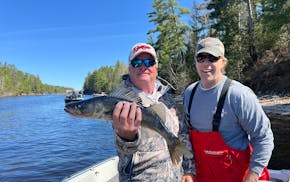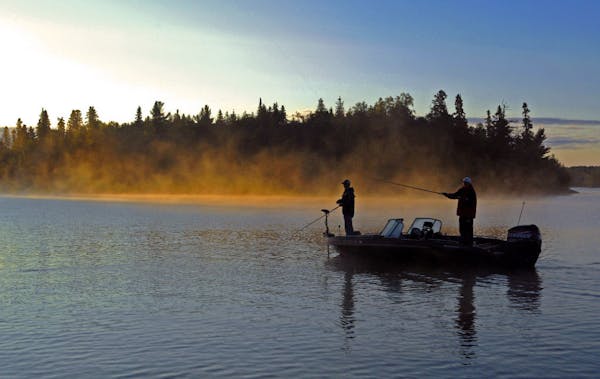Instead of being inundated with news about coronavirus this spring, Minnesota's more than 1 million anglers were supposed to hear and read messages about switching from lead fishing tackle to nontoxic alternatives made of tin, steel and tungsten, among other materials.
Such was the plan of the Minnesota Pollution Control Agency (MPCA) and the Department of Natural Resources (DNR) after receiving a million-dollar payout from the 2010 Deepwater Horizon Gulf of Mexico oil spill.
Minnesota had been awarded $1.2 million as part of a multibillion-dollar legal settlement with British Petroleum (BP) and had intended this spring to use the money to begin a three-year educational campaign to persuade Minnesota anglers to "get the lead out'' of their tackle boxes.
The money was allotted to Minnesota after a convincing argument was made by DNR nongame-wildlife program supervisor Carrol Henderson, among others, that loons that nest and spend their summers in Minnesota but winter in the Gulf of Mexico were harmed by the oil spill, and that as a result the state should be compensated.
Henderson has since retired.
The MPCA had intended to hire two people to run the get-the-lead-out program and launch an information campaign this spring. But state agencies froze hiring because of the pandemic. Now, on the cusp of the May 9 fishing opener, the anti-lead campaign remains on the shelf, more an idea than a reality.
"The money is approved and awarded to the state,'' Henderson said. "But it's just sitting there. We won't lose it. In fact, if the state can demonstrate it used the money effectively in the first three-year fishing-tackle campaign, there's a chance more money could be allotted to us for another three years. But for now, the campaign is likely delayed at least until fall and perhaps until next spring.''
Small lead sinkers — those weighing an ounce or less — and small lead jigs, such as those used for panfish, are particularly troublesome for loons and swans.
With so many Minnesota anglers using this type of tackle, it's inevitable that thousands of pieces of it are lost each year and deposited on lake and river bottoms.
Enter loons and swans, both of which regularly dive and dunk in these waters, seeking pebbles they deposit in their gizzards to grind food as part of their digestive processes.
Unable to tell the difference between small lead fishing sinkers and pebbles, the birds sometimes ingest the sinkers. When they do, they poison themselves.
In early March, 10 trumpeter swans were found dead in Sucker Lake in Vadnais Heights. Tests determined each died of lead poisoning, most likely after consuming fishing sinkers that had accumulated over time in the lake's sediment.
Already some northeastern states have banned some types of lead fishing tackle. But efforts to pass similar legislation in Minnesota have stalled. The intent of the now-delayed educational effort was to convince anglers to make the switch voluntarily.
Anglers who want to "go green'' have alternative tackle materials to choose from, including tin, steel and tungsten. But nontoxic tackle can be more expensive and can also differ in key aspects from lead, which is soft and easy to bend.
Lead's specific gravity, or the ratio of its density to the density of water, also makes it ideal for fishing tackle.
That said, especially in the size of sinkers and other tackle that pose the biggest threat to loons and swans, anglers can transition to sinkers and jigs made of nontoxic materials with no loss of fish-catching efficiency.
Thinking about switching?
If so, count on your next tackle-buying trip to take more time than usual, because while almost all medium to large sporting goods stores carry nontoxic fishing gear, it's often not well displayed and can be a challenge to find.
Also, especially if choosing tackle made of tungsten, expect to fork over more cash than you would with lead.
Anglers are still getting a good deal, Henderson believes.
"Lead might be cheaper in some cases, but that's because damage to the environment and specifically to loons and swans isn't figured in,'' he said. "Loons for example have very acidic digestive systems, so they're very vulnerable to lead poisoning. About 12 percent of all dead loons we find in the state are due to lead poisoning. I don't think that's something our anglers want to be part of.''
Dennis Anderson * danderson@startribune.com

Anderson: Tails wagging, DNR officers' dogs find lost people and missing evidence
Anderson: Punish poachers more
Anderson: The Chainsaw Sisters Saloon is gone, but the Echo Trail is still a pathway to possibilities


